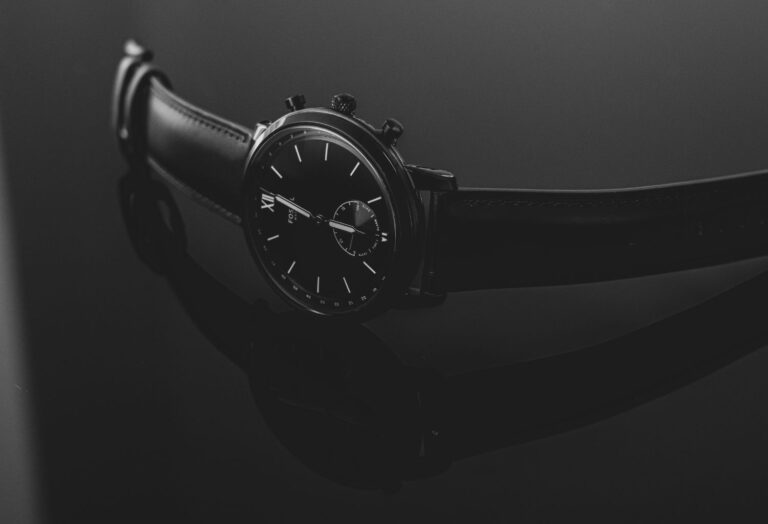Who is Rolex’s Main Competitor
When it comes to luxury timepieces, Rolex stands tall as one of the most esteemed and iconic brands in the world. Renowned for its precision, craftsmanship, and timeless elegance, Rolex has established itself as the epitome of luxury watchmaking. However, every great brand has its competitors, and Rolex is no exception. In the realm of high-end watches, there are several formidable contenders vying for the spot of Rolex’s main competitor. In this article, we will delve into the world of luxury timepieces and explore the brands that pose the stiffest challenge to Rolex’s dominance. So, let’s dive in and discover who stands in the ring toe-to-toe with the undisputed champion.
Table of Contents
- Rolex’s Main Competitor in the Luxury Watch Market
- Examining the Competition: A Closer Look at Rolex’s Biggest Rival
- Competitive Landscape: Identifying the Pretenders and Contenders
- Analyzing Key Features: How Rolex’s Competitor Stacks Up
- Navigating Price and Prestige: Which Competitor Offers the Best Value?
- Recommendations for Rolex: Strategies to Stay Ahead in the Market
- FAQs
- In Conclusion
Rolex’s Main Competitor in the Luxury Watch Market
Rolex, a renowned name in the world of luxury watches, faces stiff competition from several other formidable players in the market. One of its main rivals is the distinguished Swiss watchmaker, Patek Philippe. With a rich heritage dating back to 1839, Patek Philippe is synonymous with timeless elegance and unparalleled craftsmanship. Moreover, the brand has garnered a loyal following due to its commitment to producing limited quantities of meticulously crafted timepieces that embody the pinnacle of luxury. Patek Philippe watches are often regarded as the ultimate status symbol, desired by connoisseurs and collectors alike. Their intricate complications, such as perpetual calendars and minute repeaters, showcase the brand’s unwavering dedication to pushing the boundaries of innovation and technical mastery in horology.
Another noteworthy contender in the luxury watch market that Rolex competes with is Audemars Piguet. This Swiss manufacturer, established in 1875, stands out for its avant-garde design philosophy and its pursuit of artistic expression combined with precision engineering. Audemars Piguet timepieces are celebrated for their daring aesthetics, seamlessly integrating traditional craftsmanship with contemporary flair. The brand’s Royal Oak collection, introduced in 1972, revolutionized the industry with its bold octagonal bezel and steel construction. This audacious move challenged the established norms and solidified Audemars Piguet’s position as an innovator. The brand continues to impress with its mastery of intricate complications, such as split-second chronographs and extraordinary grande sonnerie wristwatches. Rolex undoubtedly faces fierce competition in the luxury watch market, where Patek Philippe and Audemars Piguet shine as its notable rivals.
Examining the Competition: A Closer Look at Rolex’s Biggest Rival
When it comes to the world of luxury watches, Rolex has established itself as an icon. However, even the toughest competitors have their rivals, and for Rolex, that rival is none other than Patek Philippe. Patek Philippe is renowned for its exceptional craftsmanship, timeless elegance, and heritage that parallels Rolex’s prestige in the luxury watch industry.. This article aims to dive into the depths of Patek Philippe and explore the factors that make it Rolex’s biggest challenger in the market.
One of the key aspects that sets Patek Philippe apart from Rolex is its unique design language. While Rolex watches are known for their timeless and classic aesthetic, Patek Philippe takes a more contemporary and fashion-forward approach. This has allowed them to tap into a younger demographic that craves modernity and innovation. Additionally, Patek Philippe has consistently pushed the boundaries of watchmaking technology, incorporating cutting-edge materials and engineering techniques. This commitment to innovation has given them an edge in terms of performance and functionality, attracting enthusiasts and collectors alike.
- Innovative design: Patek Philippe adopts a modern and trendy design language, catering to a younger audience.
- Technological advancements: With a focus on pushing boundaries, Patek Philippe incorporates state-of-the-art materials and engineering techniques into its timepieces.
- Youthful appeal: By combining contemporary style with exceptional performance, Patek Philippe attracts a younger demographic of watch enthusiasts.
Competitive Landscape: Identifying the Pretenders and Contenders
The competitive landscape of any industry can be a complex maze, filled with both contenders and pretenders. Identifying these players is crucial for businesses to gain a clear understanding of the market and make informed decisions. Let’s delve into the realm of contenders and pretenders and explore the key factors that set them apart.
Contenders in the competitive landscape possess exceptional qualities that enable them to outshine their rivals. They exhibit a strong market presence, often boasting a large customer base and a robust brand reputation. These companies prioritize innovation and consistently deliver high-quality products or services that cater to the evolving needs of their customers. With a laser focus on customer satisfaction, contenders design exceptional user experiences, nurturing long-lasting relationships and loyalty among their client base. Moreover, they frequently invest in cutting-edge technology and research, positioning themselves at the forefront of their industry. In the realm of pricing, contenders strike a delicate balance, offering competitive rates while maintaining profitability.
On the other side of the spectrum, pretenders lack the substance and credibility that contenders possess. They often face challenges when it comes to establishing a significant market presence. Pretenders may lack the necessary financial resources or infrastructure to compete effectively. Furthermore, their products or services may fall short in terms of quality, innovation, or reliability. Without a strong customer base or brand recognition, pretenders struggle to attract and retain customers, hindering their growth and success. In terms of pricing, they may resort to unsustainable strategies, undercutting competitors and sacrificing profitability in the process. Overall, it is crucial for businesses to differentiate between pretenders and contenders, as aligning themselves with trustworthy and capable players will greatly impact their own success in the competitive landscape.
Analyzing Key Features: How Rolex’s Competitor Stacks Up
Let’s dive into the essential attributes of Rolex’s primary rival, examining how they measure up in the world of luxury watches.
When it comes to design, our competitor exudes elegance and sophistication. Their timepieces seamlessly blend classic elements with contemporary styles, appealing to both traditional watch enthusiasts and modern trendsetters. Meanwhile, Rolex has established its signature design ethos, boasting a timeless and iconic aesthetic that sets it apart. While both brands excel in creating visually stunning timepieces, their approach differs, offering a range of options for discerning customers.
- Materials: Rolex prides itself on using only the finest materials, such as their renowned 904L stainless steel and solid gold alloys. In contrast, our competitor utilizes a combination of premium metals and other innovative materials, resulting in exceptional durability without compromising on luxuriousness.
- Mechanisms: Our competitor incorporates cutting-edge horological technology into their watches, featuring precise automatic movements and complications that cater to avid watch aficionados. Conversely, Rolex emphasizes reliability and accuracy through their renowned in-house calibers, designed to withstand the test of time and deliver exceptional performance in any condition.
- Brand Legacy: While Rolex has built an unmatched reputation over the years, our competitor has garnered acclaim for their attention to detail and commitment to craftsmanship. Their extensive history dates back centuries, embodying a legacy that resonates with collectors and connoisseurs alike.
Ultimately, a deep analysis of these key features reveals the distinct qualities of Rolex’s competitor. Each brand brings its own unique perspective to the world of luxury watches, catering to a diverse clientele with differing preferences and tastes.
Navigating Price and Prestige: Which Competitor Offers the Best Value?
In the ever-evolving landscape of products and services, it can sometimes become overwhelming to find the perfect combination of price and prestige. To help you navigate through this dilemma, we have carefully evaluated and compared various competitors to determine which one truly offers the best value.
When it comes to price, one competitor clearly stands out. Not only do they offer competitive pricing, but they also provide flexible payment plans that cater to different budgets. Their affordability does not compromise the quality of their products, as they are known for delivering exceptional value without breaking the bank. Additionally, their extensive range of options ensures that there is something for everyone, regardless of their specific requirements or preferences.
On the other hand, prestige is something that cannot be overlooked. Another competitor excels in this aspect by consistently delivering top-notch products and services that are widely recognized and respected in the industry. Their commitment to excellence is evident in every aspect of their offerings, from the attention to detail in their craftsmanship to the impeccable customer service they provide. With a strong reputation built over the years, choosing this competitor means investing in a brand that is synonymous with prestige and quality.
Ultimately, the decision between price and prestige depends on your individual priorities and needs. If affordability is a priority without compromising value, the first competitor is the perfect choice. However, if you seek a brand that exudes prestige and is renowned for exceptional quality, the second competitor is the ideal option. Remember to carefully evaluate your budget and expectations to make an informed decision that aligns with your goals.
Recommendations for Rolex: Strategies to Stay Ahead in the Market
In order for Rolex to continue dominating the market, it is essential to implement effective strategies that will keep them ahead of the competition. Here are some key recommendations to achieve this:
Firstly, Rolex should focus on innovation and product diversification. By constantly developing new and unique watch designs, they can appeal to a wider range of customers and stay relevant in an ever-changing market. Investing in research and development will enable them to introduce cutting-edge features and incorporate modern technology into their timepieces.
Secondly, building strong brand partnerships can greatly enhance Rolex’s market position. Collaborating with influential personalities or sponsoring high-profile events will not only create brand awareness but also establish Rolex as a symbol of luxury and success. This can be further leveraged by promoting these partnerships through targeted marketing campaigns, social media, and even exclusive events.
Moreover, offering exceptional customer service is paramount for Rolex to maintain its reputation as a top-tier luxury watch brand. Implementing personalized services such as engraving, customization, and comprehensive after-sales support will greatly enhance the overall customer experience. Through attentive and timely communication, Rolex can create long-lasting relationships with its customers and foster loyalty.
In conclusion, by prioritizing innovation, establishing valuable partnerships, and providing outstanding customer service, Rolex can effectively outshine its competitors and continue to stay ahead in the market. With a perfect blend of timeless elegance and modernization, Rolex ensures that it remains the ultimate choice for discerning watch enthusiasts.
FAQs
Q: Who is Rolex’s main competitor?
A: The main competitor of Rolex is the Swiss luxury watchmaker, Patek Philippe.
Q: What makes Patek Philippe a strong competitor to Rolex?
A: Patek Philippe is renowned for its exquisite craftsmanship, heritage, and exclusive limited edition timepieces, which appeal to high-end luxury watch enthusiasts. They focus on producing a limited number of watches each year, resulting in exclusivity and higher desirability among collectors.
Q: Are there any other competitors that give Rolex a tough competition?
A: While Patek Philippe is considered Rolex’s main competitor, there are a few other luxury watch brands such as Audemars Piguet, Omega, and TAG Heuer, which also compete in the same upscale market segment.
Q: How does Audemars Piguet compare to Rolex?
A: Audemars Piguet is known for its innovative designs, intricate complications, and high-quality craftsmanship. While Rolex emphasizes timeless elegance and durability, Audemars Piguet offers a slightly edgier approach with its Royal Oak collection, making it a worthy competitor in the luxury watch market.
Q: What sets apart Omega from Rolex?
A: Omega is often recognized for its rich history and involvement in significant events like NASA’s moon missions and the Olympics. It has gained a reputation for excellent precision, sports functionality, and a wide range of collections that cater to various tastes and preferences. Though competing in the luxury segment, Omega tends to offer a broader price range compared to Rolex.
Q: How does TAG Heuer measure up against Rolex?
A: TAG Heuer is renowned for its exceptional accuracy, athletic associations, and strong presence in the racing world. While Rolex focuses on timeless designs and higher price points, TAG Heuer offers a broader range of sporty timepieces at various price levels, appealing to a wider audience.
Q: Is there a clear winner among Rolex’s competitors?
A: The watch industry is subjective, and the choice ultimately depends on personal preferences, desired features, and individual tastes. Each competitor brings distinctive qualities, craftsmanship, and brand legacy to the table, making it challenging to declare a clear winner among them.
Q: Does Rolex face competition from non-Swiss luxury watch brands?
A: While Rolex predominantly competes with Swiss luxury watch brands, some non-Swiss brands like Jaeger-LeCoultre, A. Lange & Söhne, and Vacheron Constantin also position themselves as formidable competitors in the luxury watch market, offering unique aesthetics, high-quality movements, and exclusivity.
Insights and Conclusions
In conclusion, when it comes to Rolex’s main competitor, there is one name that stands out – Omega. Both brands have a long-standing history, exceptional craftsmanship, and a reputation for producing high-quality timepieces. While Rolex may be synonymous with luxury and prestige, Omega has managed to carve out its own niche in the market by offering innovative technologies and timeless designs. So, if you’re in the market for a luxury watch, consider exploring both Rolex and Omega to find the one that best suits your style and aspirations.

